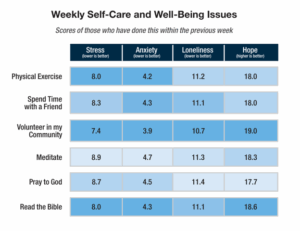
 In the national debate over sex education for young people, the high risk of sexually transmitted diseases and long-term consequences of STDs underscores abstinence as the scientifically sound message, a medical doctor told students at Southern Baptist Theological Seminary.
In the national debate over sex education for young people, the high risk of sexually transmitted diseases and long-term consequences of STDs underscores abstinence as the scientifically sound message, a medical doctor told students at Southern Baptist Theological Seminary.
Unfortunately, according to family physician Don Buckley, "safe sex" and the promotion of condoms — in spite of their alarming failure rate — is the message in most public school classrooms.
"There is a safe sex," Buckley said. However, "it's not what the world thinks it is."
A member of Olive Baptist Church, Pensacola, Fla., Buckley spoke Feb. 19 to the Christian Ethics Forum, a student group at the Louisville, Ky., seminary which focuses attention on moral concerns. Buckley also is a member of the Southern Baptist Convention Executive Committee.
Buckley based his comments on The Myth of Safe Sex, a slide presentation produced by the Medical Institute on Sexual Health, a nonprofit educational group based in Austin, Texas. MISH was founded by gynecologist and infertility expert Joe McIlhaney, a frequent guest on
James Dobson's Focus on the Family.
The MISH presentation offers a case for abstinence based solely on medical data about various sexually transmitted diseases reported by governmental agencies and secular
organizations. The slide presentation is available to educators, physicians, pastors, and others and is designed to be used to convince public school districts of the danger of safe sex education programs. The presentation also can be used in public school classrooms.
Buckley explained there are now more than twenty STDs prevalent in America, up from just two important STDs before the 1960s. Sexually transmitted diseases are infections primarily passed by an exchange of body fluids during intimate sexual contact.
'We currently face a sexually transmitted disease epidemic that is recent and unprecedented," Buckley said, noting the sexual revolution of the 'Woodstock generation" was "the fuel that flamed this current epidemic."
"The STD epidemic is a major problem in our society today," Buckley said. "The Centers for Disease Control says 12 million people are newly infected with STDs every year in America. One in five Americans now have a viral form of STDs. Sixty-six percent of newly infected persons are less than 25 years old. Teens are 25 percent of all new cases, although they represent less than 10 percent of the population."
Buckley noted the prevalence of STDs often victimizes innocent persons such as wives infected by their unfaithful husbands.
"The wages of sin keep snowballing. Sometimes it's sin that the person has committed.
Sometimes it's sin another person inflicted upon them … an innocent bystander," Buckley said.
The problem is especially acute among young people, Buckley said, declaring, "Teenagers are a high risk for sexually-transmitted diseases. That's a message we need to get out to our teens. They are not invincible. They are at great risk, even greater than adults."
In addition to STDs, pregnancy also is a major problem among teens, Buckley said, noting pregnancy or complications of pregnancy is the top reason for hospitalization among teenage girls.
"I see it in teenage girls all the time," Buckley said of his Spanish Trail Medical Center practice which he shares with his wife, who also is a family physician.
"I try to get them to keep the pregnancy, take it to term and have someone adopt. But over and over again, they leave my office and their parents take them to an abortionist. And it's over with, or they think it's over with. I see them back a month later and they're dealing with the guilt. And then I have to deal with depression."
Of the commonly advocated solution to STDs and teenage pregnancy — "safe sex" education and condom promotion — Buckley countered: 'When I have a teenager come to me and admit she's sexually active, my message is abstinence, abstinence, abstinence, abstinence. I pound that message home."
Those who rely upon condoms for protection are "playing Russian Roulette," he said. The
failure rate of condoms is about 20 percent due to poor manufacturing, slippage, breakage, and other reasons, he noted.
"The leaky condom is the quintessential symbol of failed modernity," Buckley said, quoting evangelical theologian Thomas Oden. In spite of scientific, technological, and medical advances, science is not the ultimate answer to the epidemic of sexually transmitted diseases, Buckley asserted.
"I think Christians have the best answer: covenantal, sexual fidelity. Sex only in the bonds of marriage. One man and one woman for life," he said.
Resources: The Myth of Safe Sex, including notebook and slides, is sold by Medical Institute of Sexual Health, P.O. Box 4919, Austin, TX 78765; phone, (512) 451-7599.
STDs: 12 Million New U.S. Cases Yearly
• Before 1960, only syphilis and gonorrhea were important STDs, and they were easily treatable.
• In 1976, a few cases of chlamydia, an infection of a woman's uterus and fallopian tubes, is first reported. Today, chlamydia is the most commonly reported bacterial STD in the US.
• In 1981, HIV, the virus which causes AIDS, is first identified with a few cases, which grew to more than 1 million infected people and 270,000 deaths at the end of 1994.
• In 1982, herpes infections become common with almost 25 percent of the American population having acquired it by the age of 30. Time magazine did a cover story in 1982, calling herpes the "new scarlet letter."
• In 1990, penicillin-resistant strains of gonorrhea are found in all 50 states.
• In 1991, human papilloma virus (HPV), causing genital warts and cancers among both sexes, becomes frequently reported infection, especially among young people.
• In 1992, syphilis is at 40-year high, although it is 100 percent sensitive to penicillin. While in recent years the number of cases has dropped from the 1992 high, the rate of infection continues to be high.
• In 1993, pelvic inflammatory disease (PID), usually caused by chlamydia or gonorrhea, has become a significant problem. One million women, including 16,000 to 20,000 teenagers, are infected annually. PID can cause infertility.
• In 1995, a 600 percent increase in the rate of tubal pregnancies per 1,000 reported pregnancies is noted. Although the entire increase cannot be attributed to STDs, a significant portion come from chlamydia and gonorrhea.
• Today, the Centers for Disease Control says 12 million people are newly infected with STDs every year in America. One in five Americans now have a viral form of STDs. Sixty-six percent of newly infected people are less than 25 years old. Teens are 25 percent of all new cases, although they represent less than 10 percent of the population.
~ Dr. Don Buckley















